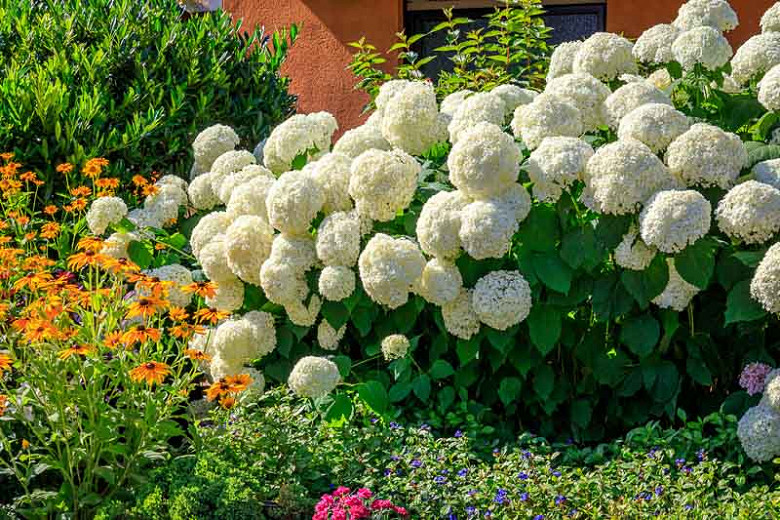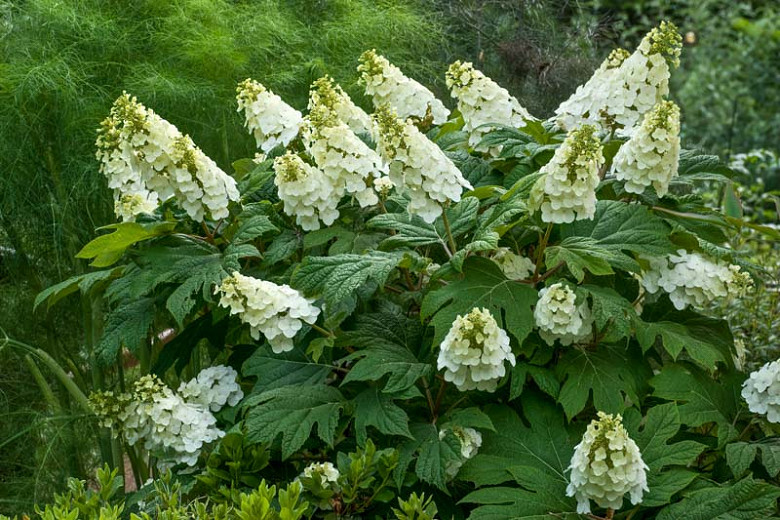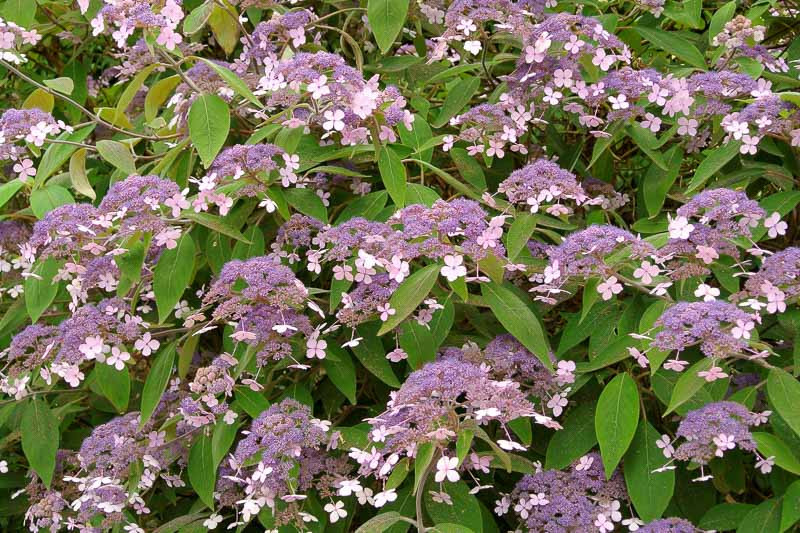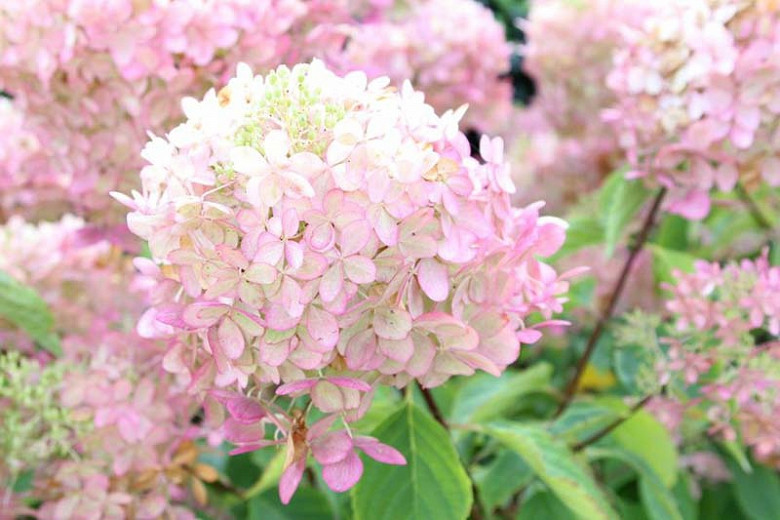Native Hydrangeas: The Beautiful Blooms That Are
Native Hydrangeas: The Beautiful Blooms That Are
Hydrangeas are some of the most popular flowering shrubs in the world, known for their large, showy blooms. But did you know that there are also many native hydrangeas that can be found in North America? These plants are just as beautiful as their non-native counterparts, and they offer a number of advantages, including being more adaptable to local conditions and being less susceptible to pests and diseases.
In this blog post, we will take a closer look at native hydrangeas. We will discuss the different types of native hydrangeas, their care requirements, and their benefits. We will also provide some tips on how to choose and plant native hydrangeas in your own garden.
Types of Native Hydrangeas
There are three main types of native hydrangeas: smooth hydrangeas (Hydrangea arborescens), oakleaf hydrangeas (Hydrangea quercifolia), and mountain hydrangeas (Hydrangea villosa).
- Smooth hydrangeas are the most common type of native hydrangea. They are found in eastern North America from New England to Florida and west to Texas. Smooth hydrangeas are known for their large, white or pink mophead flowers. They are relatively easy to care for and can tolerate a wide range of conditions.

- Oakleaf hydrangeas are found in eastern North America from New York to Georgia and west to Missouri. They are named for their large, oak-shaped leaves. Oakleaf hydrangeas have panicle flowers that can be white, pink, or blue. They are slightly more difficult to care for than smooth hydrangeas, but they are still relatively hardy.

- Mountain hydrangeas are found in the mountains of the southeastern United States. They are the smallest of the three types of native hydrangeas, and they have small, bell-shaped flowers that are white or pink. Mountain hydrangeas are the most difficult to care for, but they are also the most rewarding.

Care Requirements
Native hydrangeas are relatively easy to care for. They prefer full sun to partial shade and moist, well-drained soil. They should be watered regularly, especially during hot, dry weather. Native hydrangeas do not need to be fertilized often, but a light application of fertilizer in the spring can help to promote blooming.
Benefits of Native Hydrangeas
There are many benefits to planting native hydrangeas in your garden. First, they are more adaptable to local conditions than non-native hydrangeas. This means that they are less likely to suffer from pests and diseases. Second, native hydrangeas are often more attractive to pollinators, such as butterflies and bees. Third, native hydrangeas can help to improve the overall health of your garden by attracting beneficial insects and discouraging harmful ones.
Choosing and Planting Native Hydrangeas
When choosing native hydrangeas for your garden, it is important to consider the size of the plant and the amount of sunlight it will receive. Smooth hydrangeas and oakleaf hydrangeas can grow quite large, so they are not suitable for small gardens. Mountain hydrangeas are smaller and more suitable for shady areas.
Once you have chosen your hydrangeas, plant them in the spring or fall. Dig a hole that is twice as wide and as deep as the root ball of the plant. Backfill the hole with soil and water the plant well.
Conclusion
Native hydrangeas are a beautiful and beneficial addition to any garden. They are relatively easy to care for and can thrive in a variety of conditions. If you are looking for a low-maintenance, pollinator-friendly plant for your garden, consider planting a native hydrangea.
Hydrangeas are beautiful flowering shrubs that are native to many parts of the world. In North America, there are two main species of native hydrangea: Hydrangea arborescens (smooth hydrangea) and Hydrangea quercifolia (oakleaf hydrangea). These plants are hardy in USDA zones 3-9 and can be found growing in a variety of habitats, from moist forests to dry meadows.
Smooth hydrangeas are known for their large, white flower clusters that bloom in midsummer. They are relatively easy to care for and can be grown in full sun to partial shade. Oakleaf hydrangeas have larger leaves that turn a beautiful burgundy color in the fall. They are more difficult to grow than smooth hydrangeas, but they are well worth the effort.
If you are interested in learning more about native hydrangeas, I encourage you to visit . This website has a wealth of information about these beautiful plants, including their history, growing requirements, and pest and disease control. You can also find photos and videos of native hydrangeas in bloom.
FAQ of native hydrangea
Q: What are native hydrangeas? A: Native hydrangeas are hydrangeas that are native to a particular region or country. In the United States, there are over 70 species of native hydrangeas, including the mountain hydrangea, the oakleaf hydrangea, and the smooth hydrangea. Native hydrangeas are often more adaptable to local climate conditions and soil types than non-native hydrangeas. They are also often more resistant to pests and diseases.
Q: What are the benefits of planting native hydrangeas? A: There are many benefits to planting native hydrangeas. First, native hydrangeas are more likely to thrive in your local climate and soil conditions. This means that they will require less maintenance and watering than non-native hydrangeas. Second, native hydrangeas attract pollinators and other beneficial insects to your garden. Third, native hydrangeas can help to improve the biodiversity of your garden.
Q: Where can I find native hydrangeas? A: Native hydrangeas can be found at many nurseries and garden centers. You can also find them online. When choosing a native hydrangea, it is important to select a species that is native to your region. This will ensure that the plant is well-suited to your climate and soil conditions.
Q: How do I care for native hydrangeas? A: Native hydrangeas are relatively easy to care for. They need full sun to partial shade and well-drained soil. They should be watered regularly, especially during hot, dry weather. Native hydrangeas do not need to be fertilized often. A light application of fertilizer in the spring will help to promote new growth and flowering.
Q: What are some common problems with native hydrangeas? A: The most common problems with native hydrangeas are pests and diseases. Aphids, spider mites, and scale insects can all be a problem. Native hydrangeas are also susceptible to powdery mildew and leaf spot. If you notice any problems with your native hydrangeas, you can treat them with insecticidal soap, neem oil, or horticultural oil. You can also prevent problems by watering your plants regularly and fertilizing them with a balanced fertilizer.
Image of native hydrangea
5 different images of native hydrangeas from Pinterest:
- Mountain hydrangea (Hydrangea macrophylla) is a deciduous shrub native to eastern Asia. It has large, showy flowers that can be white, pink, blue, or purple.
- Smooth hydrangea (Hydrangea arborescens) is a deciduous shrub native to eastern North America. It has smaller flowers than mountain hydrangea, but they are just as showy.

- Oakleaf hydrangea (Hydrangea quercifolia) is a deciduous shrub native to eastern North America. It has large, oak-shaped leaves and panicles of white or pink flowers.

- Panicle hydrangea (Hydrangea paniculata) is a deciduous shrub native to eastern Asia. It has large, cone-shaped panicles of white, pink, or blue flowers.

- Hills of snow hydrangea (Hydrangea serrata) is a deciduous shrub native to Japan. It has small, white flowers that are arranged in flat-topped clusters.

Post a Comment for "Native Hydrangeas: The Beautiful Blooms That Are"